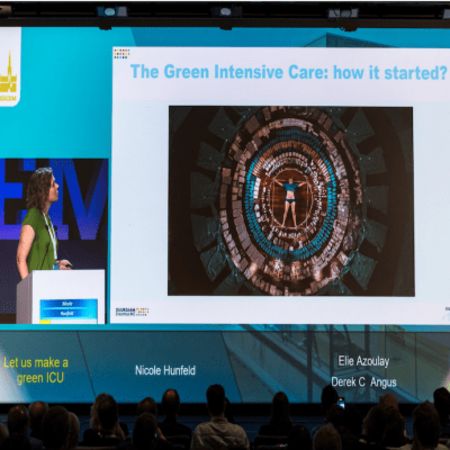The environmental impact of ICUs was in focus at ISICEM 2024. Nicole Hunfeld, a hospital pharmacist at Erasmus Medical Center in the Netherlands, emphasised the need for a sustainable medication process, particularly noting the heightened waste production during the COVID-19 pandemic.
There is an overwhelming level of plastic waste in the ICU, and its environmental implications need to be addressed. It is imperative to acknowledge the importance of balancing patient care with environmental responsibility.
The decision to launch the 'Green ICU' movement was solidified by several factors, including the healthcare sector's significant contribution to global CO2 emissions ranging from 4% to 7%. Dr Hunfeld highlighted the intertwined nature of the climate crisis and health crisis, citing rising global temperatures, increased occurrences of flooding, heat strokes, and pandemic outbreaks. The Netherlands is among the countries with a CO2 footprint nearing 7%, with Dr Hunfeld's ICU alone generating seven bags of waste per patient daily. This translates to a substantial environmental impact, including 12 kg of CO2 emissions (equivalent to a car driving 54 km), 4 m2 of landfill, and 300 L of water usage per patient per day.
Dr Hunfeld's team conducted a material flow analysis in 2020 to identify key areas contributing to the waste footprint of the ICU, focusing on consumable input, usage, and waste to target the most significant contributors.
Over one year, the ICU utilised 250,000 kg of products, including 14 different types of plastics, which pose a challenge for recycling due to their mixed nature. It is impractical to expect nurses to sort these plastics into separate waste streams. In addition, significant water usage is attributed to infusion and renal replacement therapy fluid bags and disposable items like gowns, bed liners, gloves, and syringes.
Dr Hunfeld and her colleagues have published their findings identifying environmental hotspots within the ICU. These findings served as a foundation for initiating action towards creating a greener ICU. She emphasised the importance of engaging nurses in discussions about implementing change and inviting their input on where to begin the transformation process.
Establishing the 'Greenteam' marked a pivotal step in the ICU's journey towards sustainability, comprising a diverse group of professionals, including students and volunteers, who convene biweekly to oversee the Green ICU initiative. The team sets out an annual plan with stringent objectives, including achieving a 100% circular ICU by 2030, meaning all materials and consumables are recycled and reused. The team also piloted the recycling process with dialysis bags, a significant portion of the waste stream, aiming to recycle approximately 120 bags per day, which could reduce CO2 emissions by 22,500 kg annually. Implementing this required establishing an efficient collection system without burdening the nursing staff. They introduced special collection bins and streamlined the process of separating recyclable parts from non-recyclable components in daily practice, facilitating a gradual transition towards sustainable waste management practices.
The recycling initiative in the ICU proved successful, with the bins consistently being filled daily after an initial adjustment period. Other national initiatives are also in place, such as the paracetamol challenge, which aims to reduce unnecessary intravenous paracetamol usage by promoting using oral tablets when feasible. Other hospitals are also being encouraged to participate in this challenge, aiming to switch 25% of their paracetamol usage from intravenous to tablet form.
All in all, Dr Hunfeld emphasised the need for sustainable practices within the healthcare sector.
Source: ISICEM
Image Credit: ISICEM
























